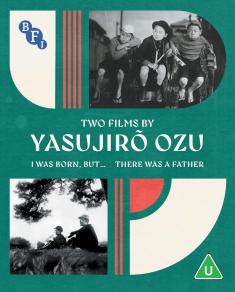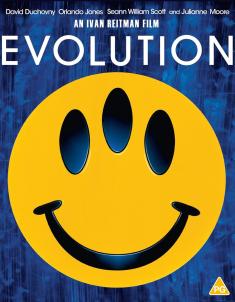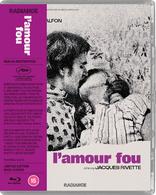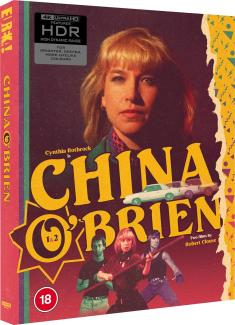The Last Samurai
Overview -
Well, here I sit. After years of hype, hope, anticipation, numerous delays and endless public bickering between the two warring high-def DVD camps, I have the first next-gen DVD player and a quartet of discs in front of me, fired up and ready for review. It's a big moment in the life of any unabashed hi-tech geek -- the launch of a new format is equivalent to Christmas, New Year's, Easter and Fourth of July all rolled into one. And since this is high-definition we're talking about, multiply that euphoria by ten -- because the ability to own affordable, pre-recorded HD content has been the holy grail of home theater enthusiasts for the past two decades. So the fact that HD DVD is finally here and a genuine, tangible reality, well... it is hard to believe this day has finally come.
Which makes the pressure of which disc to watch first almost unbearable. If I'm being honest, I can't say that if I had my druthers, the first HD DVD discs consumers would have to chose from would be 'Million Dollar Baby,' 'Serenity' and 'Phantom of the Opera.' They are all good movies to be sure, but I definitely would never have picked a Tom Cruise movie to kick off a new HD format, let alone one as big-budget, bloated and self-important as 'The Last Samurai' (geesh, even 'Top Gun' would have been better -- at least that one has flying jets and Kenny Loggins on the soundtrack). But here I am, picking 'Samurai' as my first-ever high-def DVD review title, if only because it allows me to pay the biggest compliment I can think of to the new HD DVD format -- despite the fact that I would normally hate this movie, I loved every last single second of it.
It looked and sounded so damn good on HD DVD that it actually made me excited to watch a Tom Cruise movie again. Now, that is some kind of technological miracle.
But before we get on to the good stuff, a quick look at 'Last Samurai,' the movie itself.
Storyline: Our Reviewer's Take

It is the late 19th century in Japan, and American war captain Nathan Algren (Cruise) must lead a group of Japanese soldiers to defeat a rebellion of the countries that remain Samurai. But before you can say "Dances with Wolves," Algren is captured and imprisoned by the Samurai, and soon finds himself spiritually transformed by the forces he once swore to destroy. But soon the Japanese forces will begin again their search for Algren and the Samurai -- ready to destroy the warrior culture and anyone who stands in its way.
Truth be told, 'Last Samurai' is an entertaining movie. It's filled with tons of loud sword fights, panoramic vistas, Very Important Dialogue and lots of slo-mo shots of Tom flashing his sullen, toothy grin. And it certainly is a handsomely-mounted epic, with top-notch production and costume design, strong performances by its largely Japanese cast (particularly Ken Watanabe, who earned an Oscar nom for his role as Algren's mentor Katsumoto) and polished direction by Ed Zwick. But aside from feeling a bit too much like 'Shogun' meets 'Dances with Wolves,' I just never once believed Cruise as Algren. But perhaps I'm biased -- years of Cruise's Scientology rants and couch-jumping antics have for me long overshadowed his skills as an actor. But in terms of slick Hollywood bombast with a dash of cultural clash thrown in, 'Last Samurai' is not a bad night of popcorn entertainment. And it makes a perfect disc to show off your new next-gen HD gear. So, forget the plot -- how does this sucker look and sound?
Video Review
Unfortunately, assessing the quality of an HD DVD disc isn't as easy as standard DVD. Connecting the nearly decade-old DVD format we know and love to today's TVs is fairly straightforward (even with its multitude of connection options), and you always know the basic resolution output you're going to get. HD DVD, on the other hand, is a far more complicated proposition. With the multitude of high-def resolution formats (720p, 1080i, 1080p, etc.), the quality of the picture you are going to receive is much more dependent on the equipment that you have, and how you connect it all up. In the HD world, one size does definitely not fit all. So that means there is a little good news/bad news when it comes to how much picture bang for your buck these first first HD DVD discs can deliver.
First the good news. Warner has not skimped on its first HD DVD releases. 'Last Samurai,' like Warner's other two initial HD DVD offerings ('Million Dollar Baby' and 'Phantom of the Opera') showcases the movie by encoding it at 1080p -- meaning you're going to get every last pixel of the HD format's absolute maximum 1920 x 1080 resolution. Hooked up properly to a HDTV that can accept an 1080p input, you're getting a professional-grade image that can only be bettered by today's multi-million dollar digital cinema formats.
Now, the bad news. There are very few HD display devices on the market today that can accept a 1080p input (we're using one of them, the HP Pavilion 65" DLP RPTV, as the centerpiece of our reference system), but then Toshiba's two first-gen HD DVD players (the HD-A1 and its slightly snazzier cousin, the HD-XA1) can only output 1080i anyway. That means the performance you can get today out of these first HD DVD discs is a slight notch down from full 1080p. But rest assured, it can still deliver one hell of a picture, and is certainly a major leap forward in image quality over even the best standard DVD image.
So that caveat aside, I watched 'Last Samurai' via the Toshiba HD-XA1's HDMI 1080i output, and I also did comparisons via the player's component output (which is still the best input the majority of HDTV sets on the market can accept). Then I fired up a showing of 'Last Samurai' I recorded off of HBO-HD recently on my Dish Network HD DVR, to make a comparison between HD DVD and satellite HD broadcasts. Finally, I did a quick HD DVD versus standard DVD comparison, just for giggles. (I would have liked to have also done a comparison between HD DVD and the fledgling D-VHS HD videotape format, but alas 'Last Samurai' has not been released on D-VHS.)
Now, at last the results. Watching 'The Last Samurai' at 1080i via HDMI on the HP was certainly an impressive experience. At times it delivered some of the best video I've ever seen on a pre-recorded consumer format. Many shots are breathtaking -- the kind of three-dimensional images you rarely seen outside of the cinema. Close-ups predictably had the biggest wow factor, though even some of the widest panoramic shots boasted noticeable fine detail that exceeded anything seen on standard DVD. Colors also "popped" incredibly well, with a few shots containing lots of deep oranges and lush greens that were incredibly striking. The transfer's blacks were also rock solid, and contrast was excellent. Plus, I noticed none of the ringing or halos still frequently seen on standard DVD transfers, which gave 'Last Samurai' a very natural, film-like appearance.
After watching the full film via HDMI, I shuttled back and forth between the HDMI outs and the component outs on the Toshiba HD-XA1. First, great news for those who do not currently own an HDTV set with HDMI inputs -- Warner has elected not to enforce ICT, the controversial "down-res" copy protection scheme built into the HD DVD spec, that allows a content provider to downgrade the quality of an HD DVD disc to standard DVD quality via the component outs. So that means you can watch all the studios initial HD DVD offerings in 1080i without HDMI -- at least for now, until Warner decides to implement ICT (which it has publicly stated it intends to do). Also note that most TVs with component inputs do not accept 1080p, though there are a few on the market that do, so most likely 1080i will be perfectly suited to most consumers current HDTVs.
As for the picture quality via HDMI versus Component outs, HDMI wins. I've always found it to be a ever-so-slightly more crisp picture, with more solid color reproduction and a tad richer blacks. However, 'Last Samurai' still looked great via Component outs, and it certainly rivaled any film-based satellite HD broadcasts I've seen.
Comparing the HD DVD and the HBO-HD broadcast showing of 'Samurai' also bore some interesting results. I'd give the edge to HD DVD, because of one considerable improvement versus satellite and terrestrial HD broadcasts -- macroblocking. I've subscribed to DirecTV, Voom and now Dish Network, and even the best of their HD broadcasts suffer from some sort of pixelization, mostly on fast motion. I noticed absolutely no macroblocking on the HD DVD 'Samurai,' even on the most fast-cut, complex scenes. That's a real boon for those who want the best quality money can buy, especially when it comes to today's whiplash-paced big-budget action blockbusters. Aside from that issue, the HD DVD and HBO-HD versions of 'Samurai' were pretty comparable, though I thought the HD DVD also boasted more detail visible in the darkest areas of the picture, and slightly improved sharpness and contrast overall. Overall, purely in terms of picture clarity and resolution (minus the macroblocking issue) I'd rate the HD DVD as about a 5 to 10 percent improvement over the satellite HD broadcast.
Finally, comparing the HD DVD versus standard DVD, the victor was clear. HD DVD is simply sharper, clearer, more vibrant and more real. I was also a bit surprised that the HD DVD of 'Samurai' sported stronger colors and better blacks than the standard DVD version, even though they appear to be minted from the same master. The considerably increased detail of the HD DVD format also gives the image a better sense of contrast, as distinct picture elements like the glint on a blade or fine clothing textures now "pop" off the screen that much more, as opposing areas of light and dark are now more pronounced. (I will take a closer look at HD DVD quality versus upconverted standard DVD in my review of Universal's 'Serenity.')
Having said that, the difference between the HD DVD and standard DVD does narrow a bit if you output the standard DVD via the Toshiba's HDMI out, which can upconvert standard DVD's 480p native resolution to 720p or all the way up to 1080i (no 1080p option on these first-gen players). Watching the standard DVD of 'Samurai' upconverted to 1080i, I'd say it was about 15 percent better than the 480p out, with a sharper picture and surprisingly richer blacks (which I wasn't expecting). Though it still can't compare to the HD DVD of 'Samurai,' I'd venture to guess that on smaller screen sizes, average consumers might not be wowed as much by the HD DVD. I think if these new next-gen formats are going to win over the mainstream, they are going to need to be seen on larger screen sizes, because compared to upconverted standard DVD, they just don't deliver the same quantum leap in quality that standard DVD did with VHS.
Audio Review

Here's where the HD DVD format hasn't quite reached its full potential. Though Warner's 'Phantom of the Opera' release contains the first soundtrack encoded in Dolby's proprietary TrueHD loseless compression format -- which promises to deliver up to 7.1 channels of surround sound equivalent in quality to the original studio master -- 'Samurai' boasts a more standard 5.1 surround track, albeit one recorded in Dolby Digital-Plus.
In brief, Dolby Digital-Plus is a new, slightly improved stopgap between TrueHD and the 5.1 Dolby tracks typical to SD DVD. Built on Dolby Digital, the DD+ multichannel audio standard for all next-gen HD DVD formats and HD broadcasts delivers higher bitrates and sampling rates, and can "matrix in" an additional two surround channels of surround information into an existing 5.1 channels of encoded information. In other words, play a Dolby Digital Plus soundtrack via your existing Dolby Digital 5.1 receiver, and get a standard 5.1 soundtrack. Run it through a Dolby Digital Plus receiver, and you can extract the full 7.1 experience.
Unfortunately, no DD+ nor TrueHD receivers are yet on the market. So the only way to get the increased benefits of the DD+ format's better bitrate and improved sound quality on the first-gen Toshiba decks is a bit complicated. The players will not try and output DD+ via the HDMI, coaxial or optical audio outputs. It will simply extract the core Dolby Digital 5.1 audio which should be compatible with any receiver. You can, however, run the player's dedicated 5.1 outs -- that's one cable for each channel -- to your receiver, which will allow you to extract out the extras 2 surround channels (provided your receiver supports 7.1 speakers).
What this all means for you non-tech types is that for the most part, until TrueHD and Dolby Digital-Plus receivers hit the market, you're pretty much going to get the same Dolby Digital 5.1 soundtracks you're getting on SD DVD. Which is not a bad thing, at least in the case of 'Last Samurai.' It's a great, sometimes stupendous mix. There is strong dynamic range throughout the entire film, enlivened by very powerful, deep bass, particularly during combat sequences. Dialogue and the fine score had a pleasing tonal quality, still sounding warm and human despite the often bombastic sound effects. And the surround channels are used to often powerful effect from the very beginning, from discrete sounds and atmospheric effects to the gothic rain, thunder and gunshots that grow in prominence in the second half of the movie.
Still, the audio is still the one area where HD DVD has yet to really shine. But if the picture quality is any indication, once receiver technology catches up and more studios begin encoding discs with TrueHD, HD DVD should really deliver the best audio yet heard in home theater.
Special Features
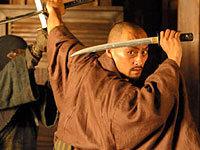
As was expected, Warner has ported over all of the supplements from the standard DVD release of 'The Last Samurai.' Which means none of the extras here will surprise anyone who already has the standard-def DVD. Still, it's better than the alternative -- the studio could have easily just gone no-frills for its first HD DVD offerings, and charged a premium or the high-quality video and audio sans extras.
Before I dive into the goodies, a note on how they are presented. As these are the same extras as the SD DVD release, they were not created with HD in mind. All the video-based supplements are encoded at 480p, and outputted as pillarboxed 4:3 video. The quality is quite good, though the film clips, which are letterboxed within the 4:3 pillarboxed frame, certainly look crappy compared to the film as it's presented in HD DVD. Also notable is that, due to HD DVD's considerable storage capacity, both the complete feature and all the SD DVD extras -- which required two-discs on the old release -- are now easy to access on this HD-30 dual-layer HD DVD disc.
Now, the extras. Once again we have an audio commentary with director Ed Zwick, who is certainly an articulate, knowledgeable guy. To be honest, though, I have not been a fan of most of his commentaries. He usually comes off as dry and humorless, and there is no exception here. But if you have 132 minutes to spare and want to know every last production detail -- from staging the fight scenes to working with a star of Cruise's magnitude, who as Zwick makes clear has his own input into every aspect of the film -- this commentary won't disappoint.
The video-based supplements kick off with the 21-minute History Channel Documentary, "History vs. Hollywood: The Last Samurai," which delves into the historical fact behind 'Samurai's fiction. Unfortunately, I didn't think this one was as strong as most of the History Channel's other movie-inspired specials, coming off as largely promotional with little in the way of historical grit. Maybe Cruise helped edit this one, too.
Next up are three longer featurettes that focus on Zwick and Cruise. "Edward Zwick: A Director's Video Journal" runs 26 minutes and is an assemblage of on-set diary footage narrated by Zwick and Cruise; the 12-minute "Tom Cruise: A Warrior's Journey" tracks Cruise as he undergoes sometimes grueling preparation to effectively portray a Samurai warrior; and the 17-minute "Making an Epic: A Conversation with Edward Zwick" is just that -- a one-on-one interview with the director, which is largely redundant with the audio commentary.
Ironically, it is the series of three short 5- to 7-minute featurettes that round out the set that I enjoyed the most, if only because they are free of the Zwick-Cruise grandstanding and back-patting. "A World of Detail: Production Design with Lilly Kilvert" shows us how the sets were built; "Silk and Armor: Costume Design with Ngila Dickson" examines the costuming; and "Imperial Army Basic Training: From Soldier to Samurai: The Weapons" dissects how the film's battalion of extras were drilled in combat and tactical maneuvers.
Finally, a couple of deleted scenes run about 5 minutes with optional Zwick commentary, but they are nothing thrilling. There is also a few minutes of promo footage of film's twin premieres in Tokyo and Kyoto, plus the theatrical trailer, which unfortunately is not presented in full 1080p HD (only 480p SD video).
So that wraps up my first impressions of HD DVD -- it looks great, but is it great enough? Admittedly, I've been living with HD for three years now. Being in L.A., I've been able to enjoy HD terrestrial and satellite broadcasts for quite a while, and I also own a D-VHS deck. So HD DVD is not so much something new as it is an extension of what I've already been enjoying. Certainly, it delivers on the bottom line -- it matches and, at times, exceeds the HD I've seen. But will it be enough to blow people away after all the hype? Purely on video quality, I'm sorry to say perhaps not. Unless you are only used to standard DVD on a 32-inch or less TV, and see HD DVD on a big screen, you may wonder what all the fuss is about. But if you have a dedicated home theater that can take full advantage of HD DVD's capabilities, you certainly will be getting the best pre-recorded consumer video money can buy.




